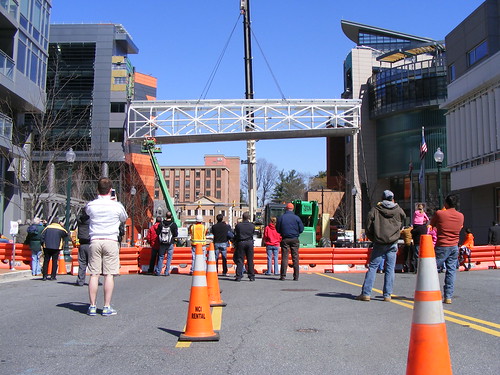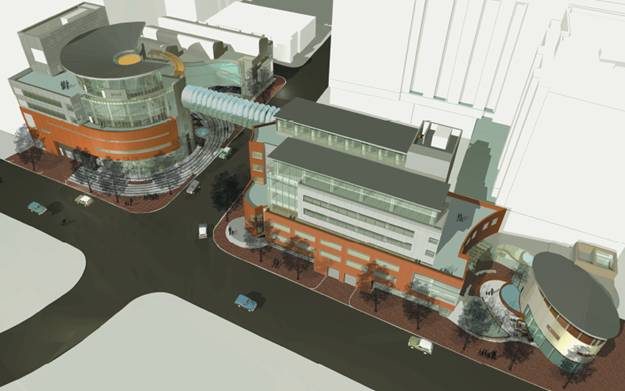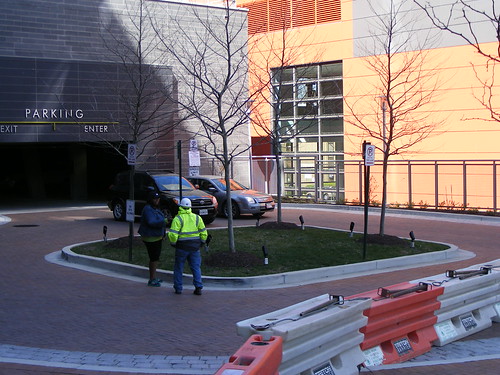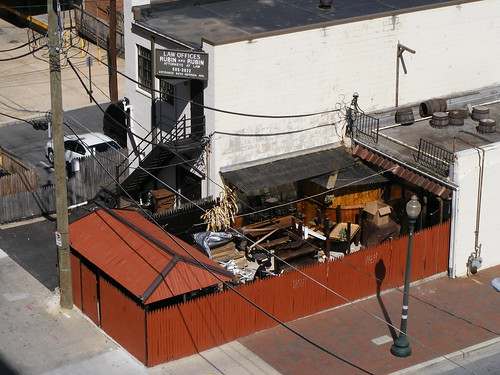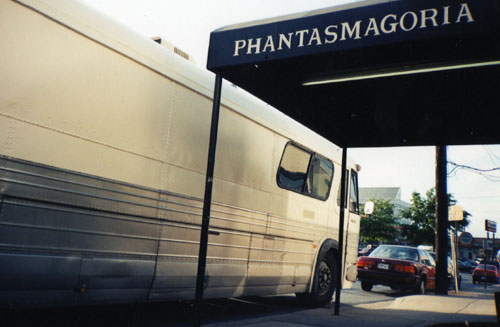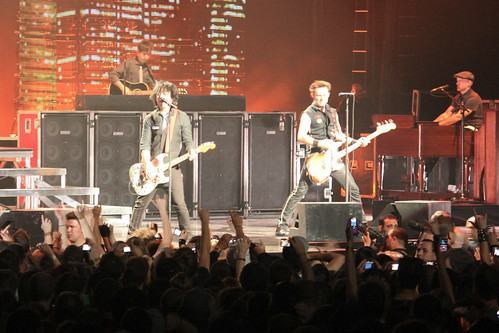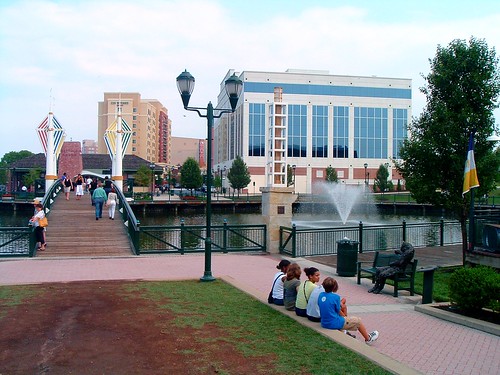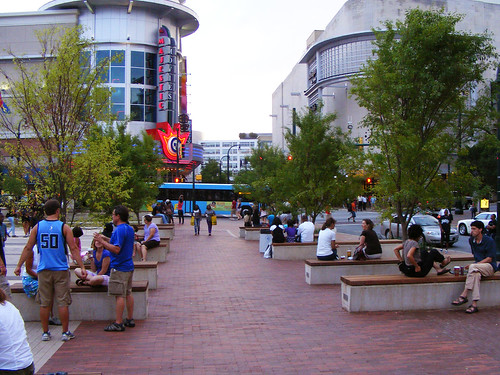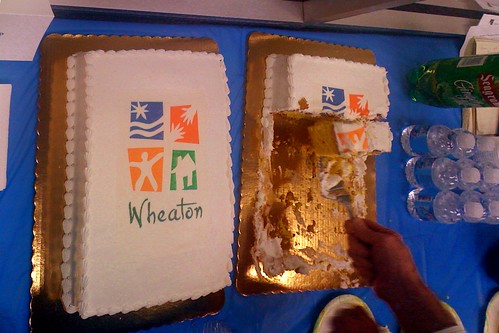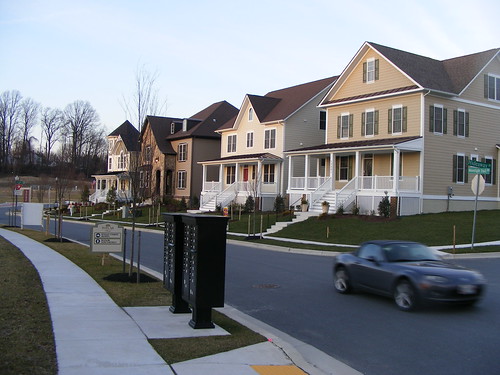Planning director Rollin Stanley has already apologized and promised to take conflict-resolution classes after calling a group of activists who disagree with him "rich white women." But according to Councilmember Marc Elrich, Stanley needs to become a better listener:
The issue isn't that Stanley doesn't "value opposing opinions." For the first time, a generation of community activists who basically ran the show in Montgomery County aren't always getting their way, and they're upset.
Members of Wellington's generation either grew up here or moved here in the decades following World War II in search of the suburban dream, and they became politically active to preserve it. These people include community activists like Wayne Goldstein or Stuart Rochester, politicians like former County Councilmembers Marilyn Praisner and Blair Ewing, and former County Executive Neal Potter. Not all of them were rich, and like current County Executive Ike Leggett, not all of them were white. Many have passed on, but those who remain continue to stand for the status quo, even as the county changes around them.
Today's Montgomery County looks more like the city these people tried to escape. There are nearly a million residents. Minorities make a slim majority of the population, but two-thirds of the public school system. Clusters of high-rise towers puncture the skyline. The county is the largest employment center in Maryland, with nearly a fifth of the state's 2.8 million jobs, and one of the largest job centers in Greater Washington.
These changes have altered the political climate in Montgomery County, as blogger Adam Pagnucco wrote two years ago. Established political organizations like the Montgomery County Civic Federation, which also called for Stanley's resignation, are now shedding members and losing influence as younger residents move in with very different values. (As a sign of how much things are changing, Pagnucco was tapped by Councilmember Hans Riemer to be his chief of staff after being elected in 2010.)
It shouldn't be a surprise to Meredith Wellington that public officials aren't as responsive to her as they once were, even if they occasionally put their foot in their mouth as Rollin Stanley did. Whether or not she's a "rich white woman," she's now just one of many different voices in Montgomery County. Demographic shifts show that there's an untapped demand for urban living in MoCo, and Rollin Stanley is listening. It's the civic activists who don't value opposing opinions, like former Councilmember Rose Crenca, who said last year that people who want to live in an urban setting should leave the county.
What's happening in Montgomery County now is a changing of the guard, and I doubt established political activists will leave quietly. But if they still want to be heard, they'll have to get in line.
Training Stanley to agree, to use less harsh speech, means little unless he begins to value opposing opinions, he said.
“I think that what he said indicates what he thinks,” Elrich said.
The issue isn't that Stanley doesn't "value opposing opinions." For the first time, a generation of community activists who basically ran the show in Montgomery County aren't always getting their way, and they're upset.
Members of Wellington's generation either grew up here or moved here in the decades following World War II in search of the suburban dream, and they became politically active to preserve it. These people include community activists like Wayne Goldstein or Stuart Rochester, politicians like former County Councilmembers Marilyn Praisner and Blair Ewing, and former County Executive Neal Potter. Not all of them were rich, and like current County Executive Ike Leggett, not all of them were white. Many have passed on, but those who remain continue to stand for the status quo, even as the county changes around them.
Today's Montgomery County looks more like the city these people tried to escape. There are nearly a million residents. Minorities make a slim majority of the population, but two-thirds of the public school system. Clusters of high-rise towers puncture the skyline. The county is the largest employment center in Maryland, with nearly a fifth of the state's 2.8 million jobs, and one of the largest job centers in Greater Washington.
These changes have altered the political climate in Montgomery County, as blogger Adam Pagnucco wrote two years ago. Established political organizations like the Montgomery County Civic Federation, which also called for Stanley's resignation, are now shedding members and losing influence as younger residents move in with very different values. (As a sign of how much things are changing, Pagnucco was tapped by Councilmember Hans Riemer to be his chief of staff after being elected in 2010.)
It shouldn't be a surprise to Meredith Wellington that public officials aren't as responsive to her as they once were, even if they occasionally put their foot in their mouth as Rollin Stanley did. Whether or not she's a "rich white woman," she's now just one of many different voices in Montgomery County. Demographic shifts show that there's an untapped demand for urban living in MoCo, and Rollin Stanley is listening. It's the civic activists who don't value opposing opinions, like former Councilmember Rose Crenca, who said last year that people who want to live in an urban setting should leave the county.
What's happening in Montgomery County now is a changing of the guard, and I doubt established political activists will leave quietly. But if they still want to be heard, they'll have to get in line.



